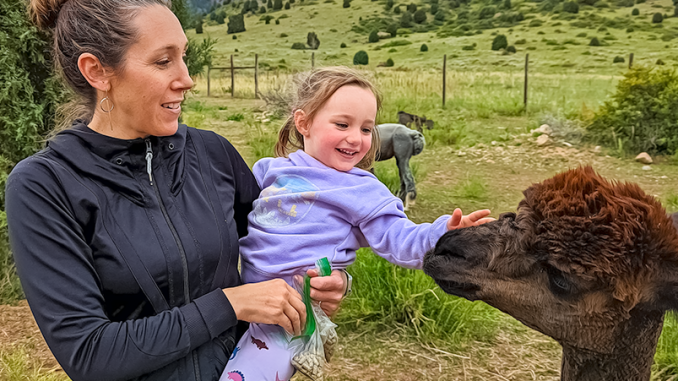
Best alpaca adventures package and holiday tricks and tips in Denver, Colorado: Additionally, if you love seeing and interacting with animals, an alpaca farm provides a hands-on experience. You can hand-feed your new friends a healthy snack and hang out with them while they provide amusing entertainment. It provides you with the chance to interact with the ranch: Most people don’t know a lot about alpacas before they visit the ranch. Alpacas originate from South America, and they’ve been brought to Colorado over the last several decades. The climate of Colorado is perfect for the alpaca, so they’re content living on ranches in Denver. Are you looking for an educational opportunity for your kids? Come enjoy an alpaca experience that’s not only fun but also informative. This alpaca experience takes place on a fiber farm. This type of farm raises animals like alpacas, sheep, goats, llamas, angora rabbits, and more for their fleece and wool. See additional details on alpaca experiences in Colorado.
For many years, zoologists assumed alpacas and llamas had descended from guanacos, and they were classified in the genus Lama. However, in a 2001 paper titled “Genetic analysis reveals the wild ancestors of the llama and the alpaca” in the journal Proceeding of the Royal Society B, researchers showed there is “high genetic similarity” between the alpaca and the vicuña, and between the llama and the guanaco. They recommended that the alpaca be reclassified as Vicugna pacos.
Are alpacas dangerous? No. Alpacas are pleasant to be around and generally easy to handle. Alpacas do not head-butt. They do not have horns or hooves like other livestock. They move gracefully and adroitly about the field and are therefore unlikely to run into or over anyone intentionally. Males develop sharp fighting teeth at about three years of age which can cause injury to both humans as well as other alpacas. Alpacas will reflexively kick with a hind leg, particularly if surprised from behind. While the impact of an alpaca kick is not on par with a horse, it can create a bruise. Also, there is potential for toenails to cut skin.
Adorable, docile and soft, alpacas are prized as pets and cattle around the world. There are no wild alpacas. Alpacas are domesticated versions of vicuñas, South American ruminants that live high in the Andes. Alpacas are related to llamas, which are domesticated versions of another wild Andean ruminant, the guanaco. While llamas are used as pack animals, alpacas are raised mainly for their soft wool. Guanacos and vicuñas are found throughout the Andes Mountains. They are descended from camelids that developed in North America and migrated to South America 3 million years ago, according to Phil Switzer, an alpaca breeder based in Colorado. These animals evolved into guanacos and vicuñas, and about 6,000 years ago, people in the Andes began to domesticate them. There are two breeds of alpaca, the Huacaya and the Suri. Huacaya alpacas are more common, according to Switzer.
The alpaca comes in two breed types: huacaya (pronounced wuh-KAI-ya) and suri (SUR-ee). Huacayas, the more common type, account for about 85-90% of all alpacas. The two breed types vary primarily in terms of their fiber. How long do alpacas live? Generally, around 15 to 20 years. The longest documented lifespan of an alpaca is 28 years. How are alpacas different from llamas? People often confuse alpacas with llamas. While closely related, llamas and alpacas are very different animals. Llamas are much larger, about twice the size of an alpaca, with a weight range of 250 to 450 pounds. Alpacas weigh between 120 to 200 pounds. Llamas are primarily used for packing or for guarding herds of sheep or alpacas, whereas alpacas are primarily raised for their soft and luxurious fleece.
Are you planning a trip to the Mile High City? Most people pack their itinerary with a Colorado Rockies baseball game, a concert at Red Rocks Park and Amphitheater, and a hike at Rocky Mountain National Park in addition to all of Denver’s museums and botanical gardens. Yet, if you’re looking for an off-the-beaten-path adventure, you can’t miss an alpaca experience. Over the last several decades, Denver has become home to these gorgeous animals because Colorado’s arid climate mimics that of their native habitat. Discover extra details at https://meetalpacas.com/.
So what do you DO with these animals? Alpacas are raised for their soft and luxurious fleece (fiber). Each shearing produces roughly five to ten pounds of fleece per animal, per year. This fleece, often compared to cashmere, can be turned into a wide array of products from yarn and apparel to tapestries and blankets. The fleece itself is recognized globally for its fineness, softness, light weight, durability, excellent thermal qualities, and luster.
